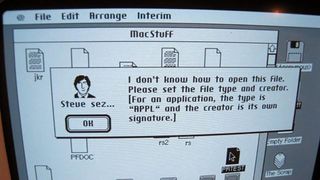If you’re interested in vintage Apple technology – and you have a lot of money sitting in your bank account – we’ve got the perfect impulse buy for you: a very rare Apple Macintosh #M0001 prototype from 1983 is up for sale, and it could break records for a computer of this type.
The auction is running at Bonhams in New York (via New Atlas) until October 23, and the Mac is estimated to fetch up to $120,000 (that’s roughly £90,000 / AU$175,000). However, considering how rare it is, there’s a chance it’ll smash through that price guide to become the most expensive Mac in history.
There are only a few of these #M0001 prototypes in existence, and another one fetched $150,075 (about £114,405 / AU$219,110) in 2019. These machines have the nickname ‘Twiggy’ because they used the 5.25-inch Twiggy disk drives, rather than the 3.5-inch versions on the first Macs to launch in 1984.
The story goes that Steve Jobs ordered these pre-production units to be destroyed because of errors related to the drive, but this one has survived – and if you’ve got enough in your life savings, maybe you could set it up in your home office.
Sold as is

It’s not just the design of the hardware that’s special, it’s the software too. The computer runs early and unfinished versions of Mac apps, with Steve Jobs himself popping up in certain dialog boxes to give the user instructions.
That said, it’s not clear whether or not this computer actually still works (the one from the previous auction definitely did) – which might hurt its chances of fetching a record-breaking price. If you’re planning to bid on this it’s probably best to check with Bonhams first.
Similar prototypes were previously showcased at a special 30th anniversary of the Mac held in January, 2014, and it took a lot of meticulous effort to get them back to working order – so it is possible to get them working again, even if it’s not quite as easy to find spare parts for 1983 prototypes as it is for modern Macs.
The bundle comes with a prototype keyboard and a prototype mouse included, and a whole 512KB of memory (yes, that’s kilobytes). It’s a genuine slice of Apple Mac history, marking the shift to graphical user interfaces and modern operating systems.